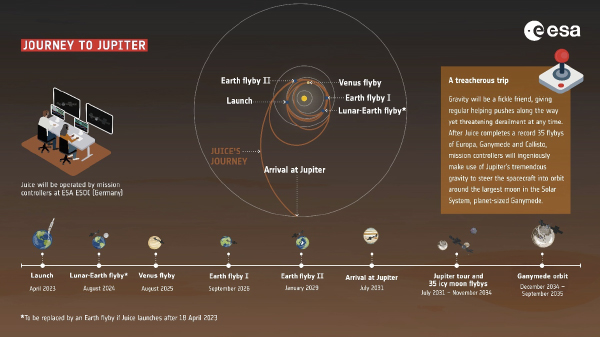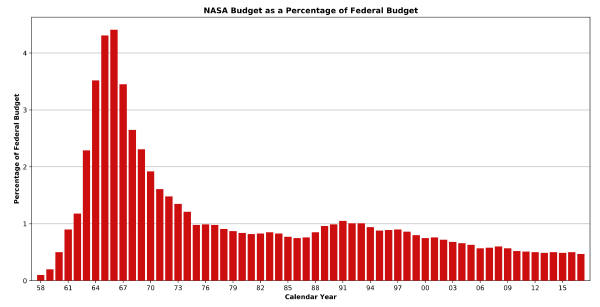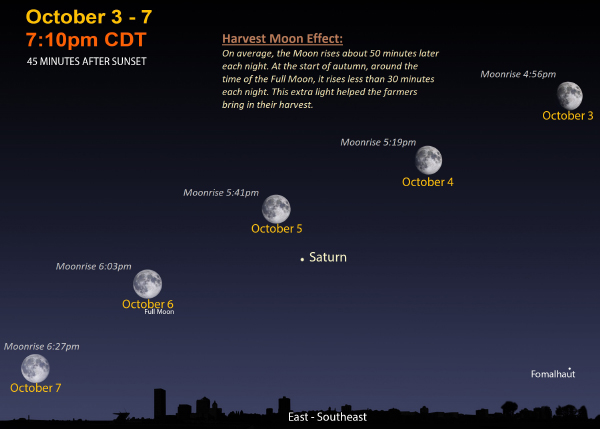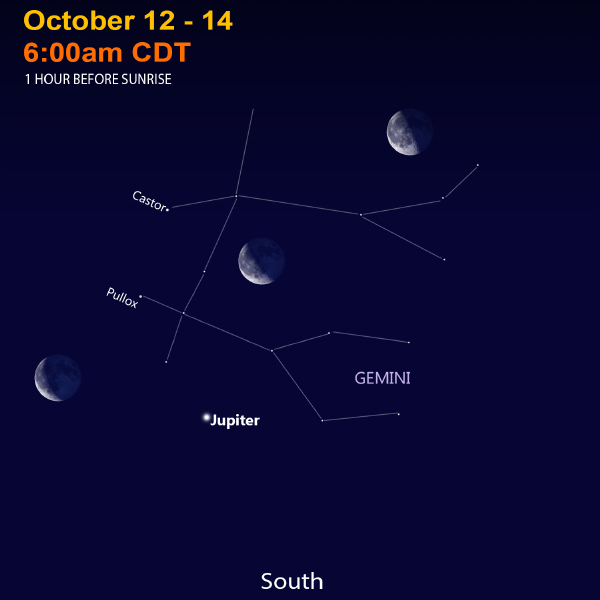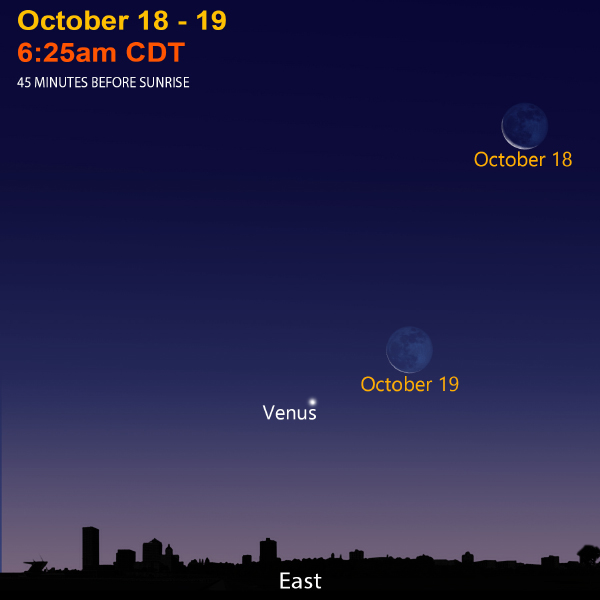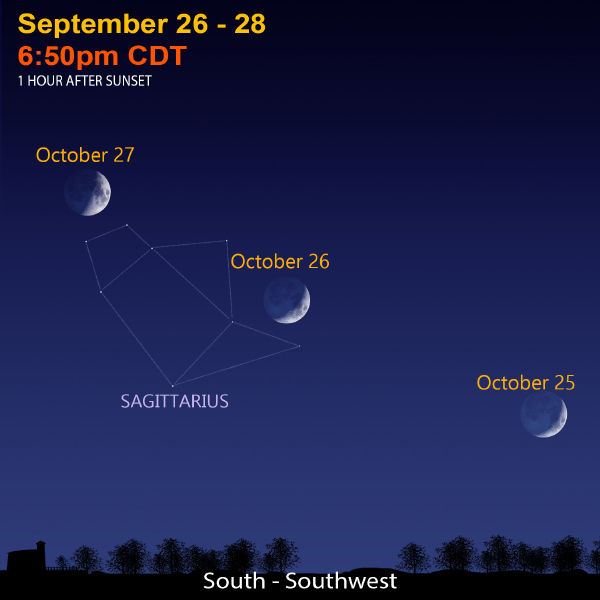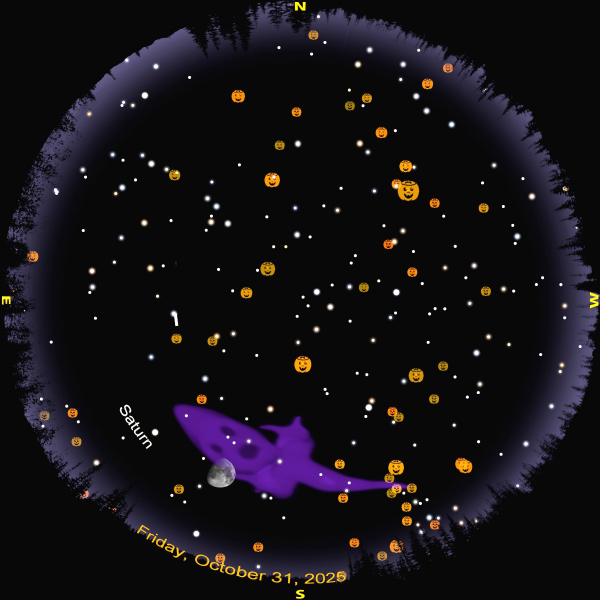Cosmic Curiosities
“Sunshine is delicious, rain is refreshing, wind braces us up, snow is exhilarating. There is really no such thing as bad weather, only different kinds of good weather.”
- John Ruskin, 19th-Century English Writer
Sun on Your Nose
Solar flare; credit: NASA
Many of us know it takes 8.3 minutes for sunlight to reach Earth. But the complete trip takes a bit longer. Diving down to the sun's nuclear core, is where light—a photon—is born. The sun creates and emits approximately 10 trillion, trillion, trillion, billion photons per second; that is the number one followed by 45 zeroes!
A photon pops into existence from nuclear fusion, when two hydrogen atoms smash into each other to create helium and energy. Every second, 600 million tons of hydrogen collide with each other to make 596 million tons of helium. The missing 4 million tons is converted to energy. This energy is released in the form of gamma-ray photons. When they reach the sun's surface, many have become the visible sunlight we see. Einstein helped figured out how the sun works over 100 years ago in his famous equation, E=mc². Fusion is no gentle affair.
A photon deep in the heart of the sun doesn't just zip straight out like a laser pointer. The sun is unimaginably dense; a photon has no mass. The sun is crowded, tightly packed by its enormous size and immense gravity. A photon's journey pings and pongs haphazardly as it bumps into protons, electrons, ions—ricocheting endlessly. Scientists call this the “random walk.” It is like being stuck in a cosmic pinball machine.
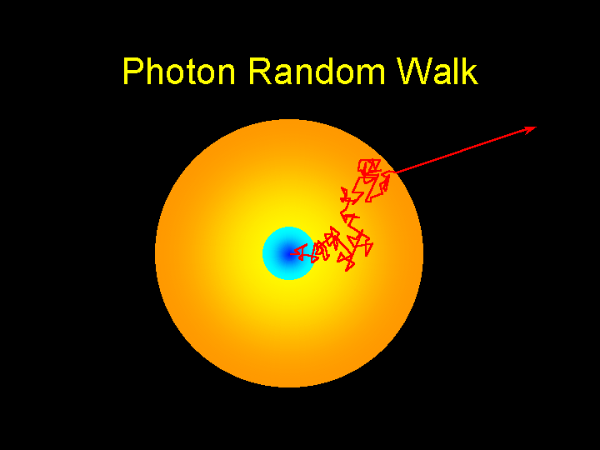
Photon's Random Walk; credit: NASA
As the photon is constantly being redirected, sometimes it moves forward, sometimes backward. On average, a photon takes tens of thousands of years, even up to a million years, just to escape the sun's dense inner layers. Think back into Earth history: A million years ago, humans were just starting to stand upright. Ten thousand years ago, we started agriculture on a much wider scale.
Finally, after countless zig-zag marathons inside the sun, the photon reaches the glowing surface. The photon blasts into space at the speed of light, 186,000 miles per second. Compared to the sluggish crawl through the solar core, this last part of the trip is a truly short joyride. In just over eight minutes, the photon traverses the 93 million miles of emptiness between the sun and Earth. On the way, a photon may encounter Mercury or Venus, or wisps of interplanetary dust, but compared to the solar interior, this is smooth sailing.
When the photon hits Earth, things get interesting again. Our atmosphere is composed mostly of nitrogen and oxygen with small traces of other atoms. Some photons from the sun get scattered by the air, which is why the sky looks blue. Others get absorbed, bouncing off clouds or warming the ground.
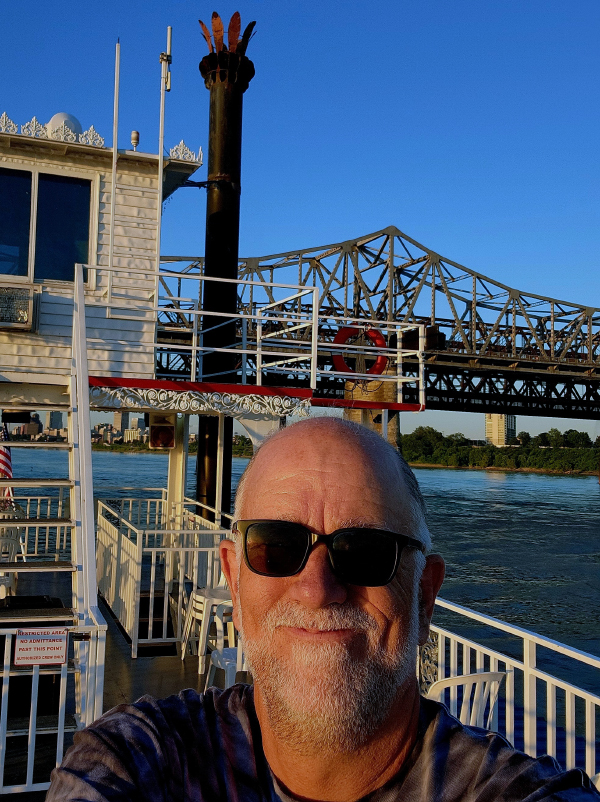
Sunny nose; credit: Bob Bonadurer
But some photons make it all the way to your nose! After a very long journey inside the sun and just minutes through space, a photon finds your nose. In an instant, the photon's energy turns into warmth. You might not even notice—it is a tiny fraction of heat. But we have been talking about one photon.
When sunlight hits your nose, approximately 5 quintillion photons hit it, if you are standing in direct sunlight in a cloudless sky. Something to think about when enjoying a sunny day.
Thank You, Gravity
Acronyms ahead! The European Space Agency's (ESA) Jupiter Icy Moons Explorer (JUICE) is returning to Earth before it voyages out to the largest planet in our solar system. No worries, though; everything is going according to plan.
JUICE flying by Earth; credit: ESA
Launched in April 2023, JUICE is heading out to Jupiter to study both the gas giant and three of its moons: Ganymede, Callisto, and Europa. Since evidence has shown the presence of oceans beneath their crusts, these moons may harbor evidence of life beyond Earth.
Jupiter is very far away, though, about 500 million miles from Earth. Trekking out there in a straight shot takes only a year or so. But the fuel costs are huge, especially with JUICE being 88 feet long and weighing 13,000 pounds. Fortunately for scientists, there exists a fuel-saving option.
Journey to Jupiter; credit: ESA
In an August 2025 statement, ESA wrote, "JUICE will use the gravity of Venus this week to bend its orbit around the sun and gain speed relative to Earth without using fuel ... [and] will use the Earth flyby in September 2026 to further fine-tune its trajectory." On the first day of September, ESA shared that JUICE successfully completed the first Venus gravity assist. So far, all is going well. JUICE will also fly by the sun, visit us on Earth again in January 2029, before flinging itself out to Jupiter by 2031. Though a longer and less direct trip seems illogical, it is a much more efficient trip than a direct shot.
These fly-bys are called gravity assists. They have been executed many times before. One of the first was a Soviet moon mission in 1959. A Soviet postage stamp shows the path of the Luna 3 probe path to photograph the moon's far side and slingshot the craft back to Earth's atmosphere. Its first use for planet exploration was the Mariner 10 spacecraft in 1973. It used the gravity of the sun and Venus to arrive at little Mercury.
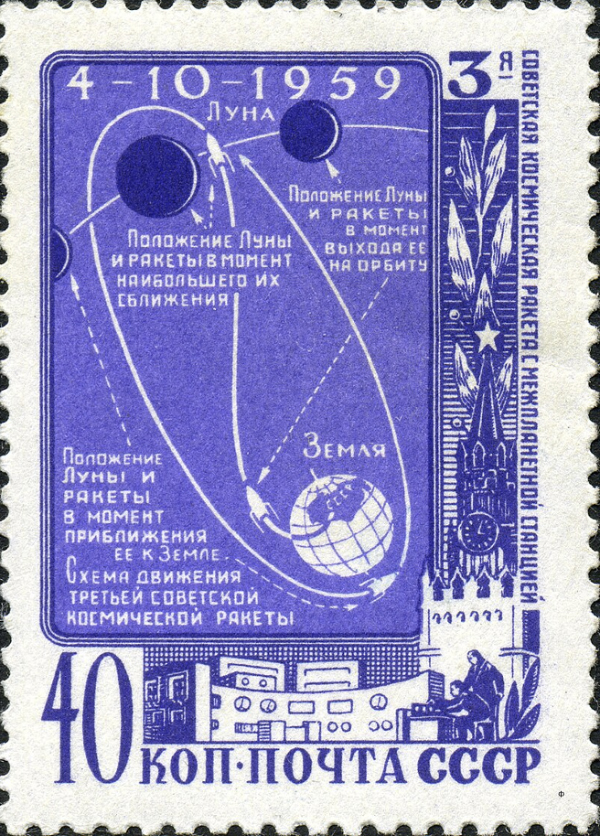
Credit: Kolekzioner.net
A gravity assist is when a spacecraft converts the angular momentum of a planet's orbit to accelerate or decelerate. Angular momentum is a measure of an object's rotational inertia and how fast it is spinning. So how does a gravity assist work? Imagine you are riding a bike, and you encounter a hill. If you were to bike up the hill, it would take a great deal of effort to pedal all the way up. Consequently, you slow down. Gravity is working against you. Conversely, the trip down the hill is much easier. You gain speed, assisted by gravity. In space, it is more complicated, as planets are moving targets, but the same concept applies. As a spacecraft approaches a planet at a high speed from behind, it gets pulled toward the planet because of gravity. The spacecraft gains speed, just like a biker going down a hill. By the time the spacecraft passes around the planet's backside, it is going too fast to go into orbit and slingshots into space.
The inverse can be used as well. A spacecraft approaches a planet from the front, and the planet's gravity causes the craft to lose speed. If it is going slow enough, it can start orbiting the planet, or its slower speed allows the spacecraft to make a more controlled shot to another target.
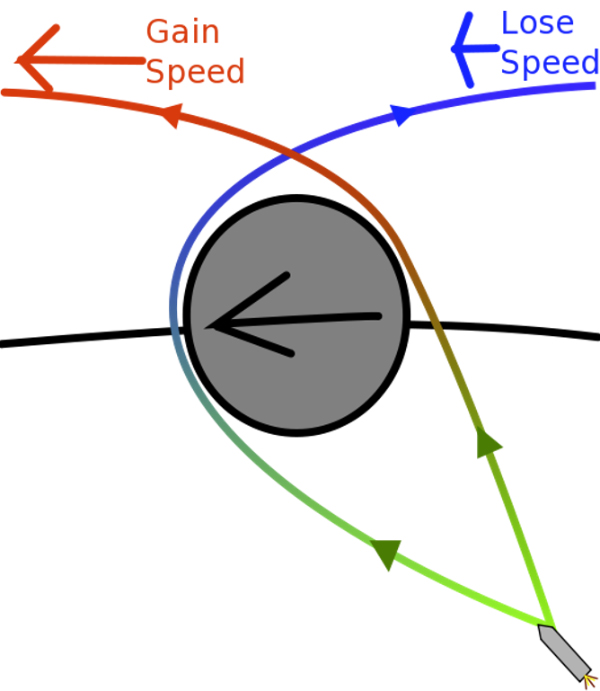
Gravity Assist Diagram; credit: KSP Wiki, Crush, 2013
Why calculate such an intricate interplanetary ballet? If scientists launched JUICE directly at Jupiter, it would require 132 million pounds of onboard propellant. Simply put, this is not possible. The fuel costs would be a staggering number and would surely be rejected by any budgetary committee.
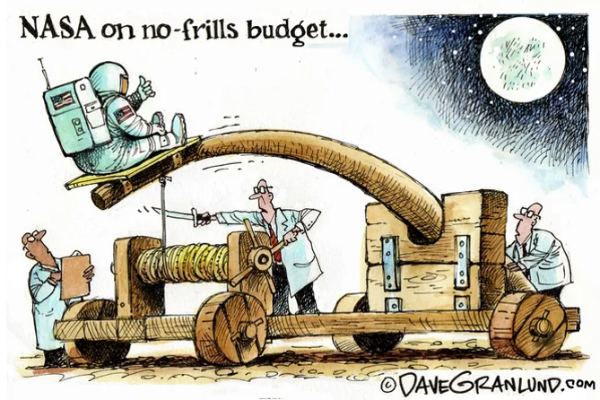
Cartoon Credit: Granlund, 2017
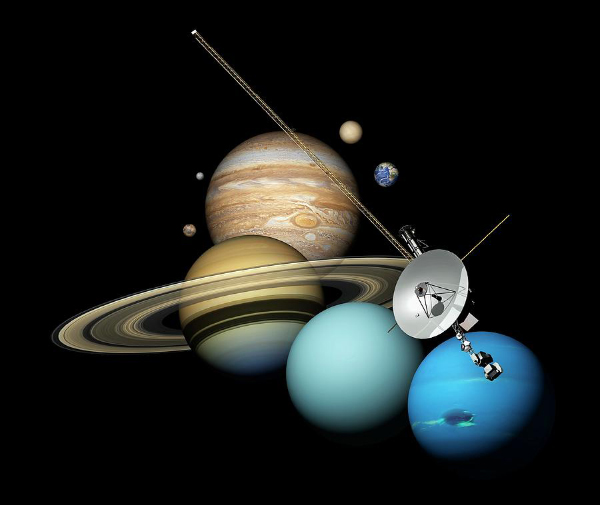
Credit: Science Photo Library
Maybe the most famous gravity assist resulted in a “solar system grand slam”! The Voyager 2 took advantage of a planetary alignment that occurs once every 176 years. It used gravity assists to visit to fly by all four gas giant planets: Jupiter in 1979, Saturn in 1981, Uranus in 1986, and Neptune in 1989. As the only spacecraft to have visited Uranus and Neptune, Voyager 2 provided essential data on these distant ice giants, including their rings, moons, and magnetospheres, before beginning its journey into interstellar space.
People on the Moon Again?
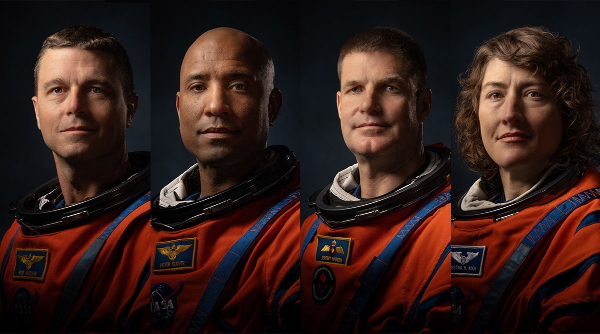
Artemis 2 Crew; credit: NASA
The space adventurers aboard NASA's Artemis 2 lunar mission are dauntless in their intention to return to the moon in 2026, despite news that the program may be facing budget cuts, including the possible cancellation of their 2027 Artemis 3 mission. Budget fluctuations are nothing new for NASA. America's politics and competing federal budget priorities have always affected how the space money flows. Plus, crewed space missions battle against pure science explorations within NASA's funding.
Credit: NASA
NASA's budget was the largest percentage of the overall federal budget in the 1960s—at the height of the Cold War. The United States was in scientific, cultural, and military competition with the Soviet Union, or USSR. As that competition waned after Neil Armstrong's historic walk and five more Apollo missions, so, too, did NASA's budgets.
The Artemis astronauts stress the importance of high visibility missions like a moon landing both as a stepping stone to Mars. They also see continued federal support as a way to inspire educators, students, and general public. Human presence in space keeps our eyes to the sky and inspires us to imagine a better future. As past astronaut Ellen Ochoa put it, "What everyone in the astronaut corps shares in common is not gender or ethnic background, but motivation, perseverance, and desire—the desire to participate in a voyage of discovery."
Artemis 1 was a successful mission back in late 2022. If Artemis 2 and 3 achieve anything like their older brother Apollo, Americans across the landscape will once again connect to thrill of exploration and discovery. The storied history of the previous space program successes has captured the hearts and minds of countless Americans. Though the last astronauts to walk on the moon were Gene Cernan and Harrison Schmidt from the Apollo 17 mission in 1972, there are countless astronaut heroes today!
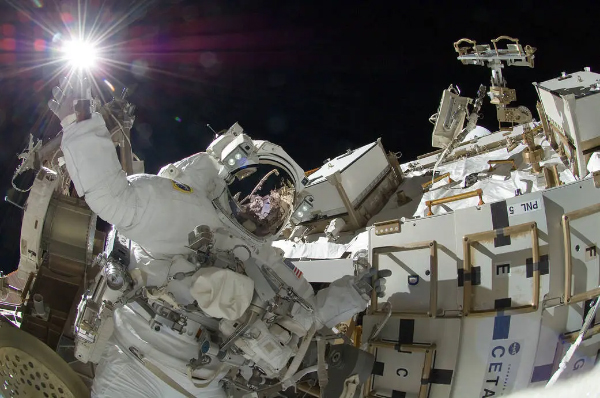
Sunita Williams on Spacewalk; Credit NASA
NASA astronaut Sunita Williams recently returned to Earth after nine months in space. She is one of the most experienced spacewalkers. Her nine spacewalks total to 62 hours and six minutes is fourth overall of all astronauts.
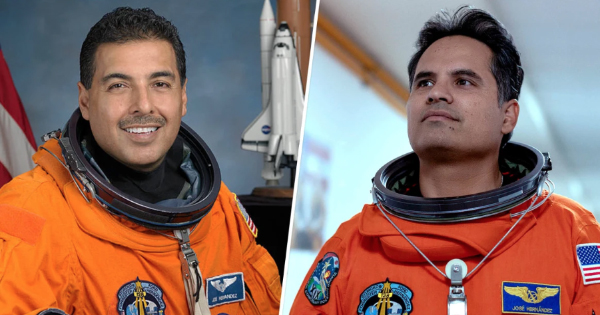
Astronaut Hernandez and Actor Pena; Credit NASA & Prime
Retired astronaut Jose Hernandez flew into space in 2009 as a mission specialist on the Space Shuttle Discovery mission STS-128 to the International Space Station (ISS). His inspiring story can be seen on Amazon Prime, starring Michael Pena. It's called A Million Miles Away.
Regardless potential budget cutbacks, NASA will keep striving toward new discoveries as they always have. Hopefully, they can continue to inspire and educate to all of us so can keep learning about space and our home planet Earth. We here at the Planetarium will try to do the same. We strive to give you and everyone who looks up at the stars the best space experience possible. Our goal is to bring awe and wonder about all the marvels and mysteries of the cosmos.
Space in Sixty Seconds
Follow a photon from the sun. Gaze at the Harvest Moon and catch a Halloween night sky!
Sky Sights
Look for five full moons in a row. While that is not technically true, the moons just before and after the Harvest full Moon on October 6 all seem to be full. This is known as the Harvest Moon Effect and is caused by the path of the moon's orbit being very shallow compared to the horizon near the start of autumn.
Also, observe Saturn near the Moon from October 3 to 7. They are closest on Sunday, October 5.
Jupiter is slowly making its way into the evening. By Halloween, the king planet rises at 10:30 p.m. CDT. On November 30, it rises at 7:30 p.m. CDT. It shines high in Gemini in the morning sky. The Moon wanders by from October 12 to 14.
A skinny crescent the Moon catches up with brilliant Venus on October 18 and 19.
Watch the crescent Moon grow bigger and pass the constellation Sagittarius from October 25 to 27.
Catch a waxing gibbous Moon on Halloween night—and who knows what else you might spot?
Mars is still too low in the west after sunset to be seen easily.
Mercury is visible in the morning sky toward the end of October, but its proximity to the sun will make it difficult to see.
October Star Map
Sign Up
Receive this newsletter via email!
Subscribe
See the Universe through a telescope
Join one of the Milwaukee-area astronomy clubs and spot craters on the Moon, the rings of Saturn, the moons of Jupiter, and much more.
Follow Bob on social media
Twitter: @MPMPlanetarium
Facebook: Daniel M. Soref Planetarium


